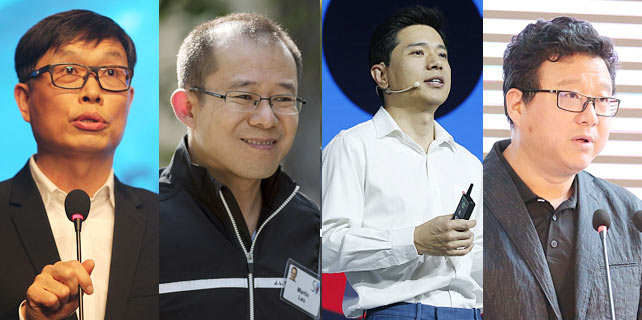The Poem with the crimson cassock

He is Living Buddha called Gyatse Phurjun Rinpoche, and he is different. Some say his writings are like the melodious love songs of the 6th Dalai Lama Tsangyang Gyatso. He talks to China Features reporter Wen Chihua
He is a holy man aged 36.And he writes poetry that touches laymen's hearts through his ability to combine the holy and the secular.
A poem from his first book, A Thought-Moment in the Secular World, reads:
Flowers evoke romance
When they bloom in the heart of a poet;
Flowers evoke the scenery
When they bloom in a the heart of a traveler;
Flowers evoke enlightenment
When they bloom in the heart of a mendicant
"I love his poems, they are philosophical, Zen-like, and yet not recondite," says Zhang Yu, a woman in her late 40s with a grown son.
"I feel intoxicated and enchanted when I read them. It's difficult to believe they are written by an ascetic."
The author is not just a monk. He is a Living Buddha called Gyatse Phurjun Rinpoche in Qinghai province.
He hears comments like these frequently. And he responds by saying, in Mandarin: "What I wrote in the book is nothing extraordinary.
It's simply a record of my thinking, my personal feelings about the Buddha's dharma, and our society."
He writes every day, and in Chinese.This makes him different from most monks of Tibetan Buddhism, as few of them write in Chinese.
Some say his poetry and essays are like the melodious love songs of the 6th Dalai Lama Tsangyang Gyatso.
Gyatse Phurjun Rinpoche says being compared to Tsangyang Gyatso is inappropriate. He said that
Tsangyang Gyatso was a great philosopher and a master of the history of Tibetan Buddhism.
He says: "Tsangyang's poems are written in a very metaphorical style, containing the wisdom of dharma.
Those who have a deep understanding of Buddhism will get a lot from his writings. When eminent monks read his poetry, their doubts are resolved. People who read his poetry simply as love songs is a misinterpretation by the people outside Tibet."
For instance, one of Tsangyang's most recognizable poems, On the Eastern Hills reads:
Over the eastern hills rise
The pure white face of the moon;
In my mind forms
The smiling face of a beloved young girl.
"How would you understand beloved young girl here?" Gyatse Phurjun Rinpoche asks.
"Tsangyang Gyatso once said of himself, while living in the Potala Palace, 'I am the king of the Snow Land; Wandering in the streets of Lhasa, I am the most beautiful lover
in the world'."
"Like Emperor Kangxi of the Qing Dynasty (1644-1911) who often traveled through the country disguised as a commoner, Tsangyang Gyatso visited women in Lhasa, because he wanted to better understand the layman's life and find ways to offer salvation to everyday people."
As the most revered Living Buddha, who was on the golden throne in the Potala Palace, Tsangyang Gyatso brought to Lhasa the most enchanting lyrics of all times. His songs were famous in every corner of the city then and are still popular.
By comparison, Gyatse Phurjun Rinpoche regards himself as an unknown Living Buddha on the Qinghai-Tibet plateau, who dearly loves writing.
"Writing has taught me to pay close attention to both the internal and external worlds. And writing my thoughts and observations reflecting this world full of uncertainties and anxieties," he says.
One of his readers says Gyatse Phurjun Rinpoche's voice "has hypnotic power, and can make you almost feel drunk".
Like the poem, Return to Silence, which goes like this:
The snow is like a dancer, falling gently on the earth,
It melts into the soil after the turbulence.
I'm like a snowflake, drifting quietly on this mortal world.
I return to silence, after having seen all the bustling of the world,
In the season I never expect I meet my bosom friends.
In the reincarnation I never cling to anything,
I seek a thorough understanding of human life.
Gyatse Phurjun Rinpoche's home is the 740-year-old Ba Monastery, which is also home to 160 monks.
His motivation for publishing the book is to help renovate Ba Monastery, and ensure the running of a welfare house and a nursing home in his hometown.
"I hope the monastery will provide a place where monks can study Buddhist scriptures, literature, English, and take computer lessons," he says.
Traditionally, a Living Buddha is in charge of a monastery's affairs.
And Gyatse Phurjun Rinpoche is no exception.
















